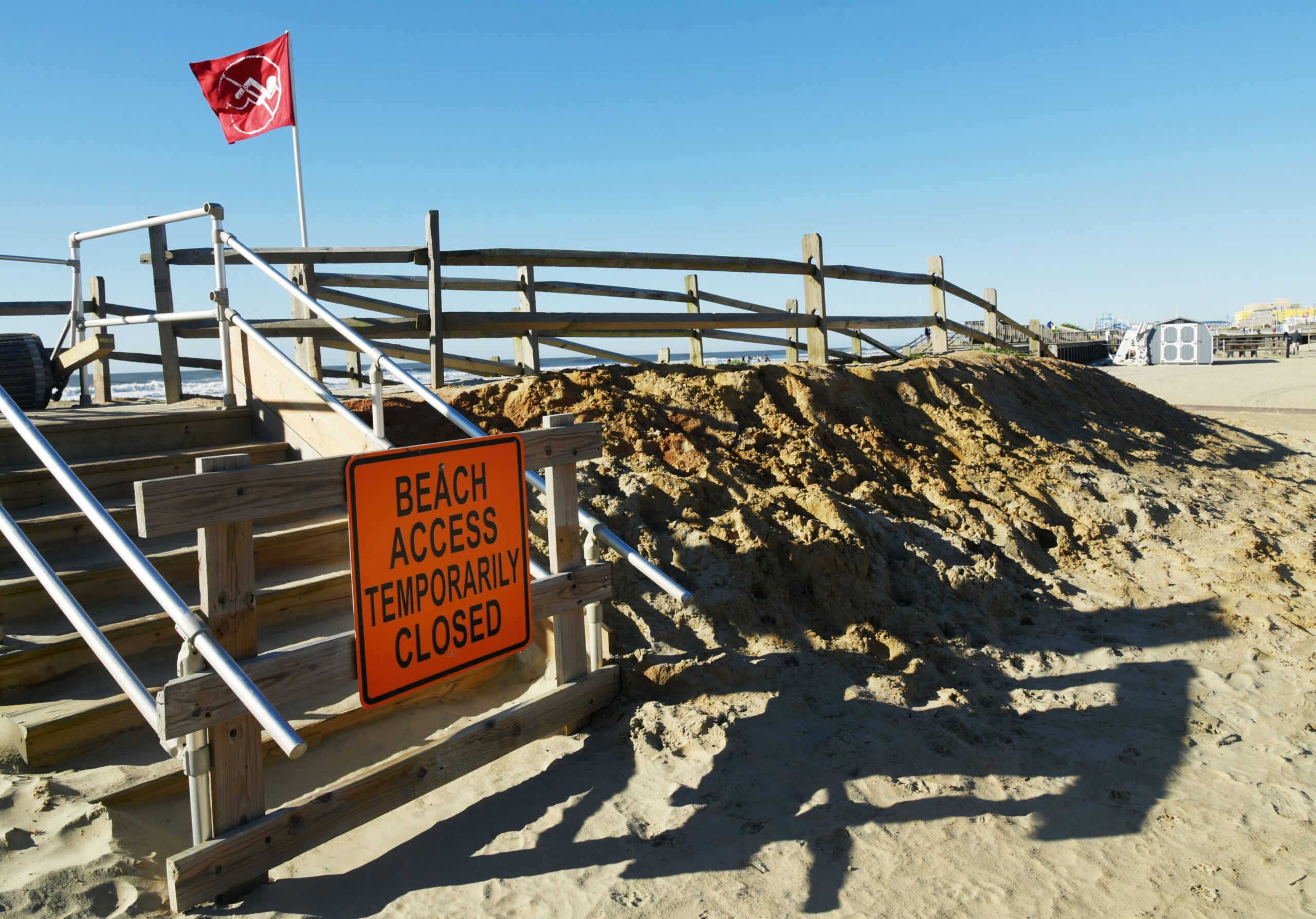As they approach one of the final major beach weekends of the summer, the outer bands of Hurricane Erin destroyed portions of the Jersey Shore, causing major beach erosion in a number of communities, according to local officials.
Several Shore towns’ mayors said they were evaluating the damage Friday from the hurricane’s floods and choppy waves.
Hurricane Erin created massive waves and strong sea surges near the Jersey Shore, which contributed to flooding during high tide, even though the storm remained hundreds of miles out to sea.
-
MORE:
Some Jersey Shore beaches remain closed for clean up, rough surf as Hurricane Erin moves out
According to Upper Township Mayor Curtis Corson, there was a lot of erosion on the town’s beaches Thursday night in Cape May County. According to Corson, the dunes were worn but not broken.
Citing the high water levels at the base of the dunes on Friday morning, Corson stated that there is no beach in the town’s north end.
He went on to say that there is no way to protect the eroding beach or gain access to it.
According to Avalon Mayor John McCorristin, the borough’s beaches, which were already significantly damaged by previous weather, lost up to 40 feet of space from the shoreline. The north end of the beach sustained the most damage, but the dune system is still in place.
The mayor stated that he did not anticipate any more major property damage in Avalon, although a few automobiles and golf carts parked along the streets were probably flooded.
According to Cape May Mayor Zachary Mullock, the city had extremely high tides up to the dunes, but he was pleasantly pleased by how little erosion there was.
According to Mullock, the city was fortunate to sustain little harm.
“That water would have definitely been in our streets if we didn’t have beach replenishment in Cape May,” Mullock added.
William Curtis, the mayor of Bay Head in Ocean County, reported that Thursday night’s storm caused significant damage to the beach. The waves crashed as the high tide ripped down dune railings.
Despite the borough finishing a replenishment project last month, Curtis expressed his disappointment that so much sand was lost, shrinking the beach.
Mayor Tony Vaz of Seaside Heights, a few towns south, reported that there was very little erosion and little to no flooding on the beaches.
The hurricane severely damaged Atlantic City’s north-end beaches in Atlantic County, causing significant sand loss from a $40 million fill project. Approximately 1.2 million cubic yards of sand that were lost to off-season storms the previous year were replaced by the activity.
According to Andrew Kramer, the spokesperson for Atlantic City, the beach patrol was still reevaluating the situation on Friday.
According to Kramer, the city will inquire about possible assistance from the federal government over the erosion.
According to North Wildwood Mayor Patrick Rosenello, the storm caused sand loss in the Cape May County city, which was noted by local officials.
Rosenello stated that while we undoubtedly lost in some areas, it appears that we also won in others, which is typical of major storms.
According to the mayor, portions of the beach’s sand cliffs were between two and three feet high.
Seawalls, bulkheads, and, of course, dunes are examples of beach protection measures that help lessen the damage caused by these storms, according to Rosenello. The value of these beach protection measures is repeatedly demonstrated.
We appreciate your faith in us to deliver reliable local news. Please think about purchasing a subscription to support NJ.com.
You may contact Victoria Gladstone at [email protected]. You may follow her at @TorigNJAM on Twitter. Facebook page for FindNJ.com.
You can contact Eric Conklin at [email protected].






